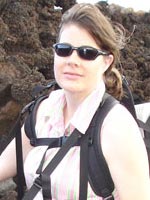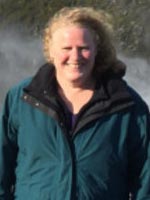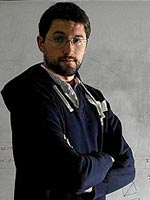Roving on Mars: Revving up for Future Exploration of the Red Planet
Tags: Mars, Planetary Exploration, Solar System
Time: Tuesday, Mar 27, 2018 -
Location: SRI International, 333 Ravenswood Ave, Menlo Park, CA 94025
Orbiters, followed by rovers sent to Mars, have yielded a dramatic increase in knowledge about Mars over the past decade. Today thanks to several years of data collected in situ and remotely we have a better understanding of its geology and habitability potential. Three SETI Institute planetary scientists who have dedicated their career to the study of the red planet will tell us what we have learned from those studies, and what the next steps are in the exploration of Mars with the next generation of rovers. Janice Bishop will introduce the candidate landing sites for upcoming martian rovers. She will focus on the mineralogy determined from the CRISM spectrometer at Mars and what that can tell us about Mars’ early environment. Ginny Gulick will describe the fluvial morphology/water history of these sites as seen by the HiRISE and CTX cameras. Finally, Pablo Sobron will address the instruments scheduled for the Mars2020 and ExoMars rovers and how SuperCam, Sherlock, and the ExoMars Raman/LIBS instrument will be used to explore mineralogy and organics at the future landing sites.
 Dr. Janice Bishop is a chemist and planetary scientist at the SETI Institute who explores the planet Mars using reflectance spectroscopy at visible and infrared wavelengths. Her investigations of CRISM data of Mars are revealing clays and sulfates in the ancient rocks that document the geochemical environment and climate at the time the minerals formed. Dr. Bishop studies the spectral fingerprints of minerals and rocks in the lab in order to generate a spectral library for identification of these in the martian data. Her research also involves collecting and studying Mars analog rocks and soils at a variety of locations including volcanic islands, cold deserts, hydrothermal regions, acidic aqueous sites, and meteorites which are the only martian samples available on Earth to date.
Dr. Janice Bishop is a chemist and planetary scientist at the SETI Institute who explores the planet Mars using reflectance spectroscopy at visible and infrared wavelengths. Her investigations of CRISM data of Mars are revealing clays and sulfates in the ancient rocks that document the geochemical environment and climate at the time the minerals formed. Dr. Bishop studies the spectral fingerprints of minerals and rocks in the lab in order to generate a spectral library for identification of these in the martian data. Her research also involves collecting and studying Mars analog rocks and soils at a variety of locations including volcanic islands, cold deserts, hydrothermal regions, acidic aqueous sites, and meteorites which are the only martian samples available on Earth to date.
 Dr. Ginny Gulick is a senior research scientist at the SETI Institute who examines erosional features on Mars, looking for the tell-tale signs of running water. Ginny is part of the HiRISE (High Resolution Imaging Science Experiment) team that directs the high resolution camera on the Mars Reconnaissance Orbiter (MRO), still busy snapping pictures of this alien landscape. In addition to these research efforts, Ginny is heavily into education. She has led the development of a web-based, image target suggestion tool which will allow anyone (especially students) to offer their opinions as to which martian features should be photographed with the MRO.
Dr. Ginny Gulick is a senior research scientist at the SETI Institute who examines erosional features on Mars, looking for the tell-tale signs of running water. Ginny is part of the HiRISE (High Resolution Imaging Science Experiment) team that directs the high resolution camera on the Mars Reconnaissance Orbiter (MRO), still busy snapping pictures of this alien landscape. In addition to these research efforts, Ginny is heavily into education. She has led the development of a web-based, image target suggestion tool which will allow anyone (especially students) to offer their opinions as to which martian features should be photographed with the MRO.
 Dr. Pablo Sobron is a research scientist at the SETI Institute who has strong interests in robotic space exploration and comparative analog science - the study of places on Earth that are similar to environments on other planets and moons. Pablo received his Ph.D in Physics from the University of Valladolid, Spain, in 2008. To date, he has lead or collaborated on over 20 projects focused on the development of instruments and data processing tools for missions to explore the Solar System, and on fundamental research. These projects have been sponsored by the European Space Agency, Canadian Space Agency, and NASA, among others.
Dr. Pablo Sobron is a research scientist at the SETI Institute who has strong interests in robotic space exploration and comparative analog science - the study of places on Earth that are similar to environments on other planets and moons. Pablo received his Ph.D in Physics from the University of Valladolid, Spain, in 2008. To date, he has lead or collaborated on over 20 projects focused on the development of instruments and data processing tools for missions to explore the Solar System, and on fundamental research. These projects have been sponsored by the European Space Agency, Canadian Space Agency, and NASA, among others.
NOTE: Due to the popularity of the SETI Talks events, tickets are often sold out. If you register to attend, then realize you will be unable to come, please let us know as we will then be able to open up the seats for others. You can email us at webmaster@seti.org. Thank you!
SETI Talks are held at the SRI Conference Center at 301 Ravenswood Avenue. Please enter from Middlefield Road and follow the signs.
